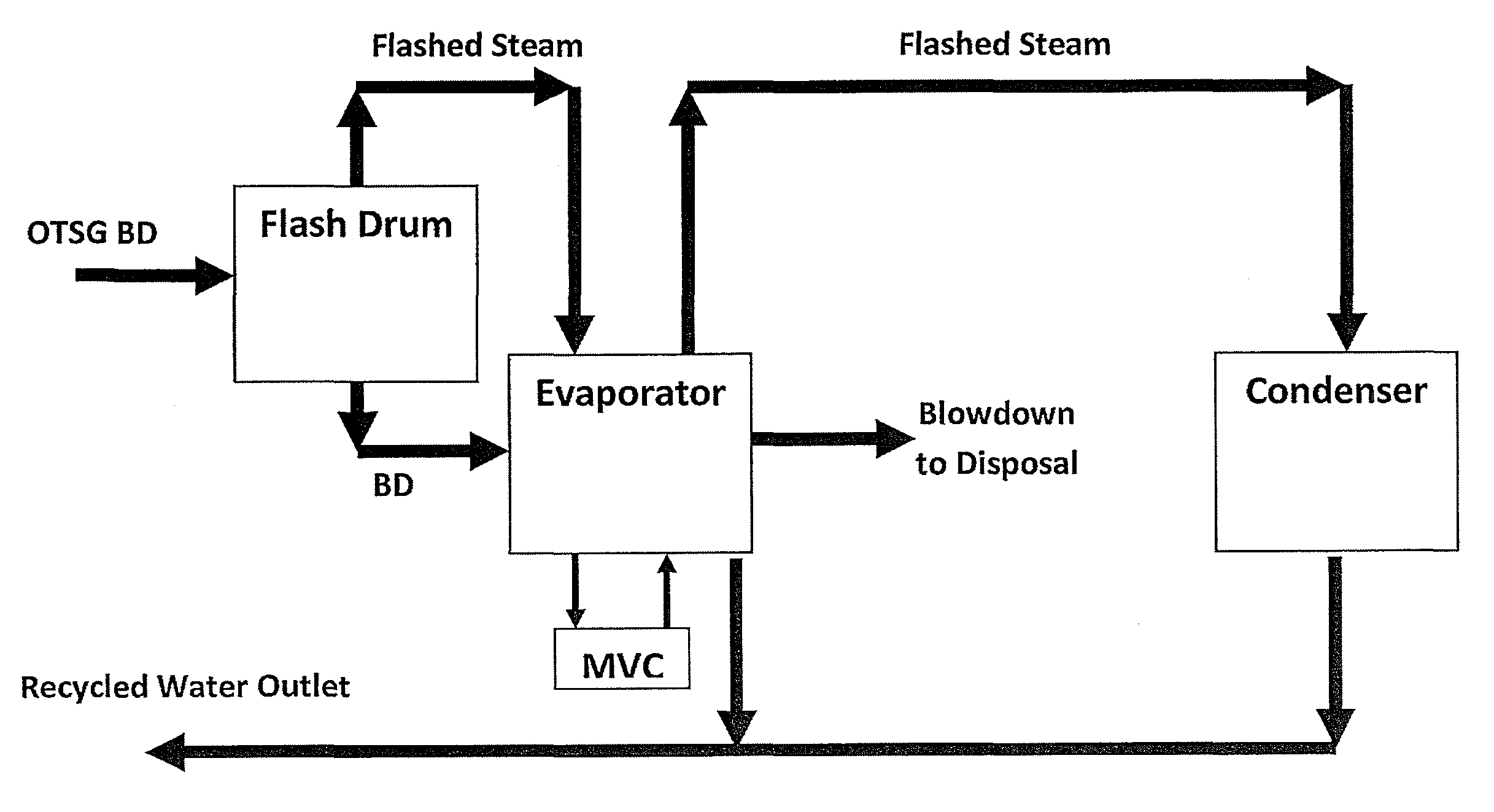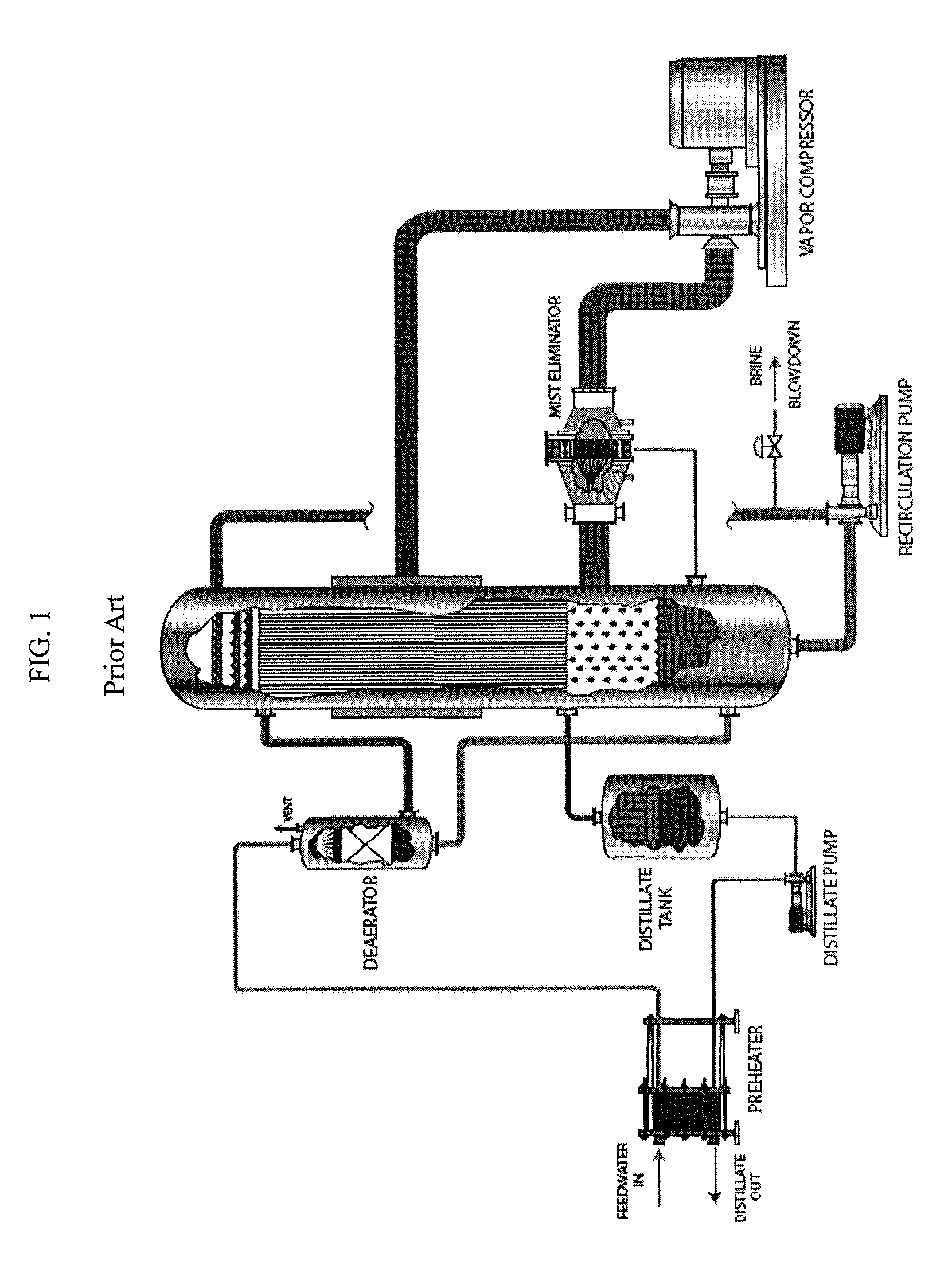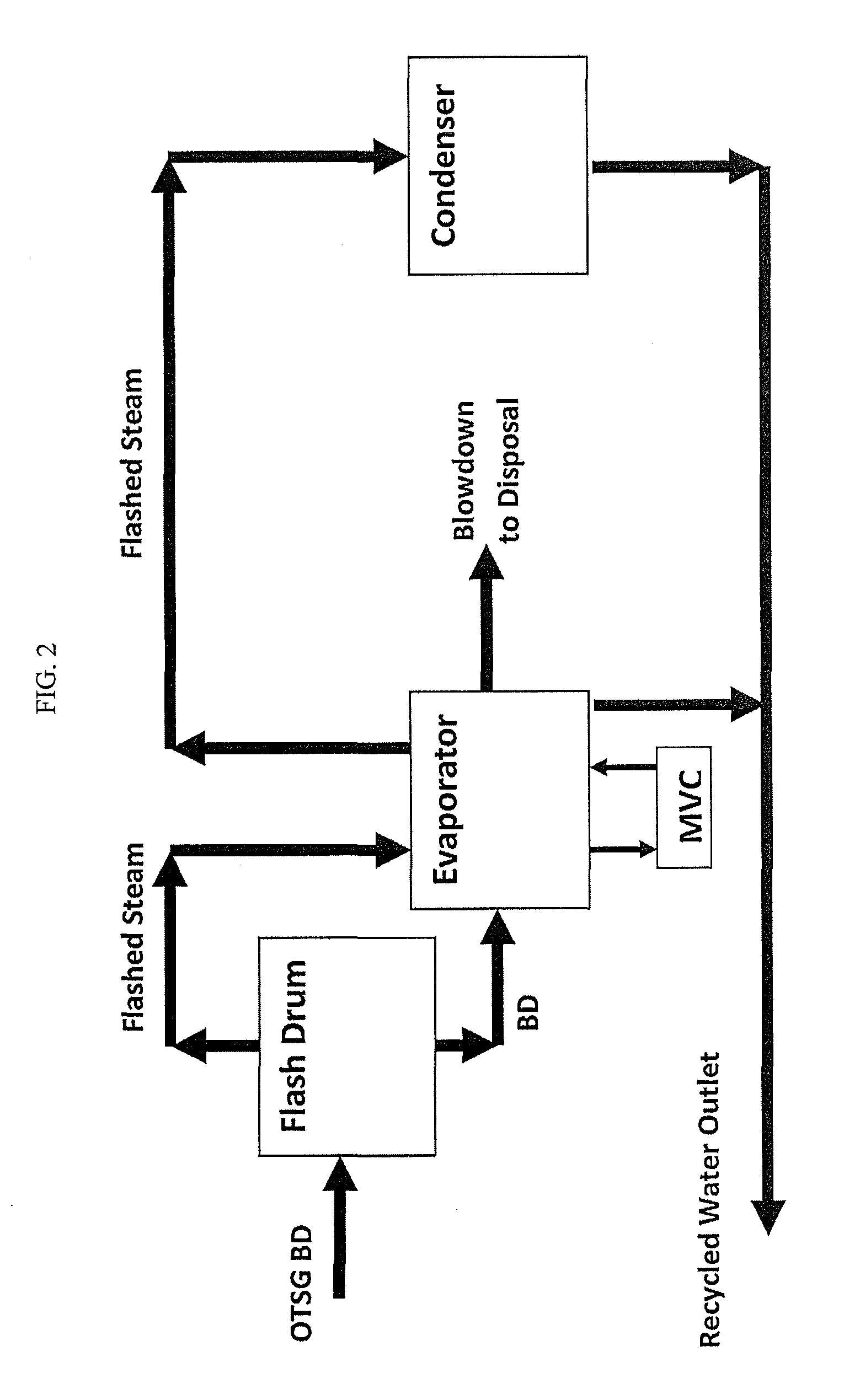Method and apparatus for recycling water
a technology of water recycling and water treatment, applied in the nature of treatment water, waste water treatment from quaries, wellbore/well accessories, etc., can solve the problems of high specific energy consumption required for mvc process, high operating cost associated with vapor compression amount, and unfit blowdown stream to recycle, so as to reduce or eliminate mvc power consumption, reduce the overall cost and footprint, and improve the overall economics of oil recovery
- Summary
- Abstract
- Description
- Claims
- Application Information
AI Technical Summary
Benefits of technology
Problems solved by technology
Method used
Image
Examples
example # 2
Example #2
[0069]In another embodiment the evaporation system includes a 1) flash drum; 2) thermocompressor; 3) primary evaporator; and 4) vapor condenser. (Refer to FIG. 6.)
[0070]In this embodiment the OTSG blowdown stream is accepted to the evaporator system without substantial upstream cooling. The OTSG blowdown is fed to the evaporator system existing at a high specific enthalpy, having a temperature and pressure equal to (or less than) that of the injection steam. Before being fed to the evaporator vessel itself, this high enthalpy stream can be flashed to a medium pressure to generate a vapor phase and a liquid phase.
[0071]The vapor phase, existing at a medium pressure, can be used as motive steam in a thermocompressor. The thermocompressor will use this high energy motive stream to load vapor being generated by the evaporator to produce a discharge water vapor stream that is suitable to drive evaporation and eliminate the need for a mechanical vapor compression.
[0072]Assume th...
example # 3
Example #3
[0076]In a further embodiment the evaporation system includes a 1) flash drum; 2) primary evaporator; and 3) vapor condenser. (Refer to FIG. 8.) An OTSG Blowdown stream has a flow rate of 200 m3 / h. We compare how this would be treated by the conventional evaporator technology and the inventor's technology.
[0077]In this example, the OTSG blowdown stream is to be recovered with a VTFF evaporator that is designed to operate at 20 cycles of concentration for a water recovery of 95%. We then would have an evaporator system mass balance as:[0078]OTSG Blowdown: 200 m3 / h[0079]Distillate: 190 m3 / h[0080]Evaporator Blowdown: 10 m3 / h
[0081]First consider the conventional evaporator technology. The OTSG blowdown is sent through the BFW preheater and then the trim cooler to deliver the stream to the evaporator at 90° C. (Refer to FIG. 7.) Considering a specific energy requirement for the MVC design of 15 kW·hr / m3 of distillate, the operating power requirement for such a system would calc...
PUM
| Property | Measurement | Unit |
|---|---|---|
| boiling temperature | aaaaa | aaaaa |
| temperature | aaaaa | aaaaa |
| temperature | aaaaa | aaaaa |
Abstract
Description
Claims
Application Information
 Login to View More
Login to View More - R&D
- Intellectual Property
- Life Sciences
- Materials
- Tech Scout
- Unparalleled Data Quality
- Higher Quality Content
- 60% Fewer Hallucinations
Browse by: Latest US Patents, China's latest patents, Technical Efficacy Thesaurus, Application Domain, Technology Topic, Popular Technical Reports.
© 2025 PatSnap. All rights reserved.Legal|Privacy policy|Modern Slavery Act Transparency Statement|Sitemap|About US| Contact US: help@patsnap.com



